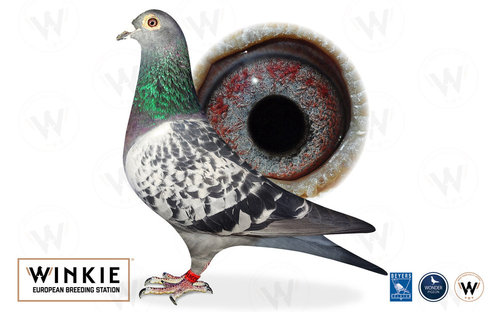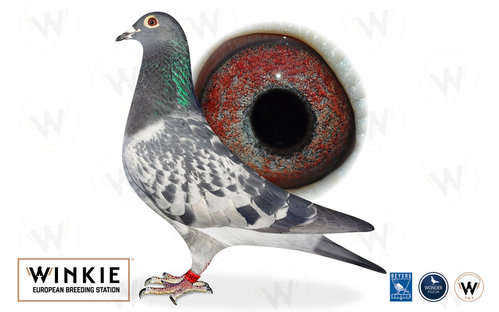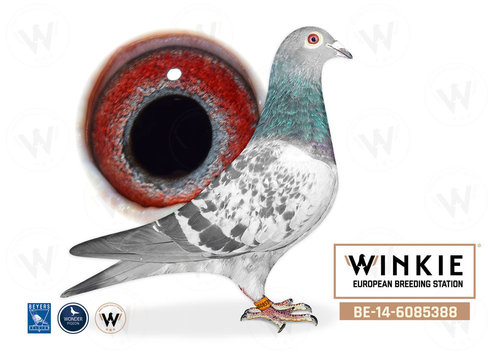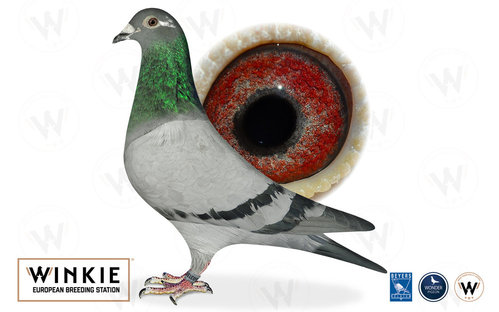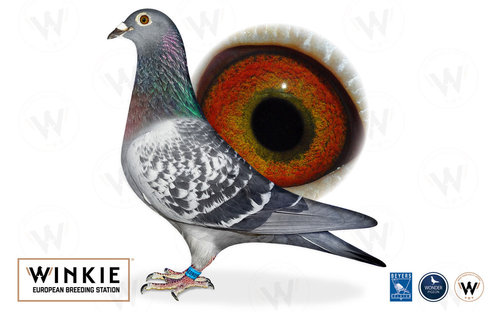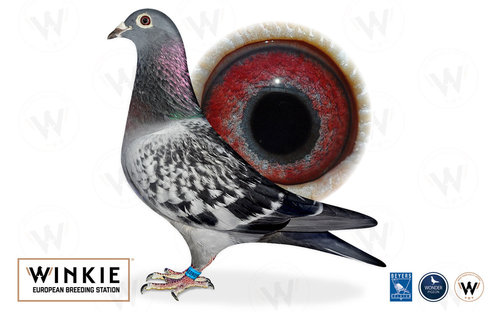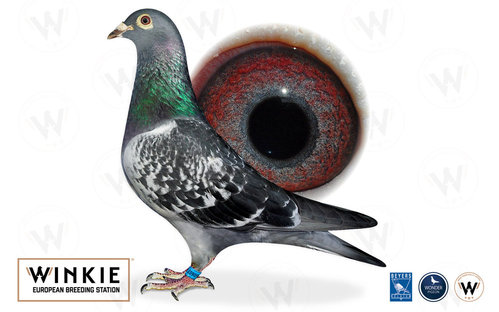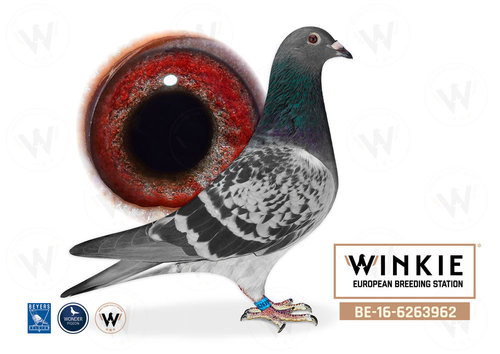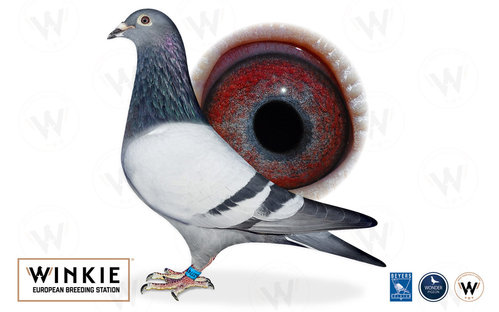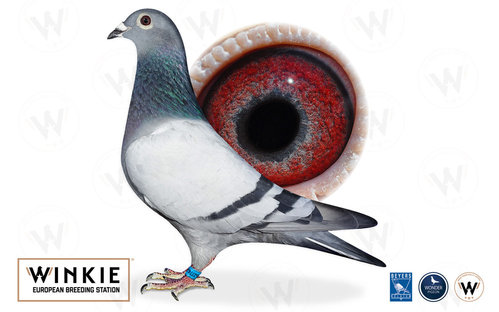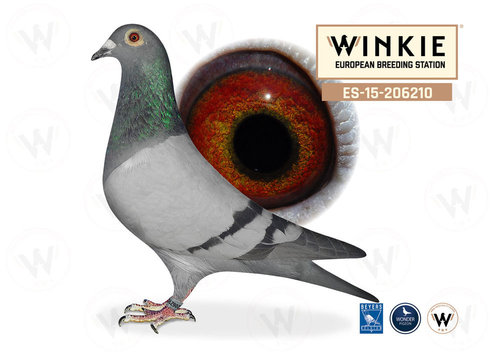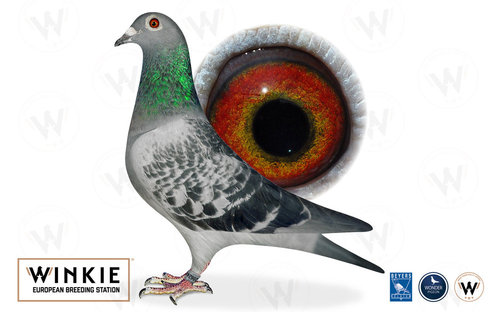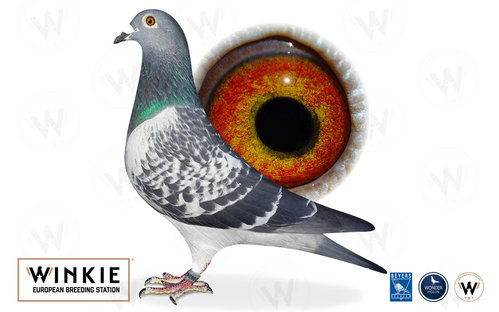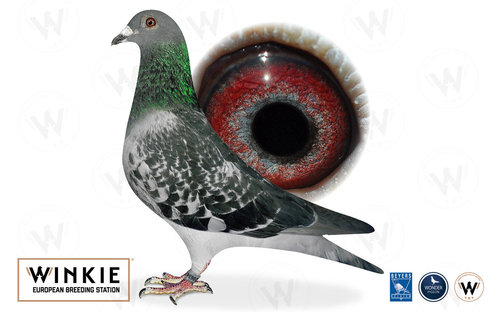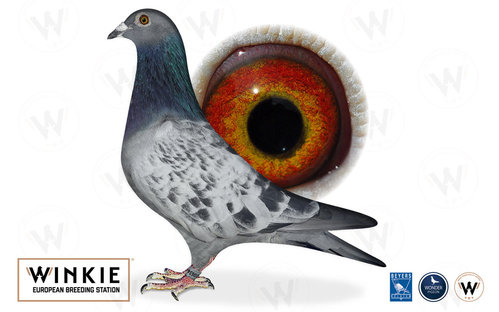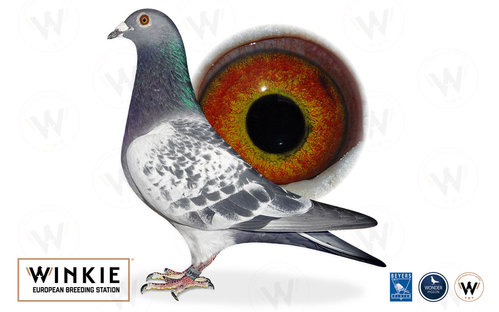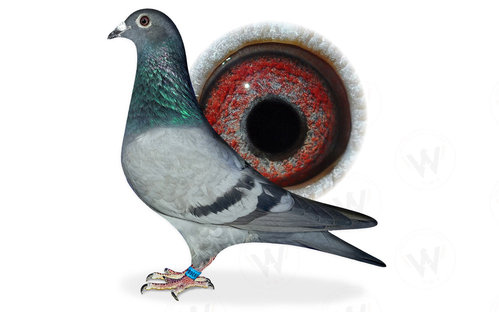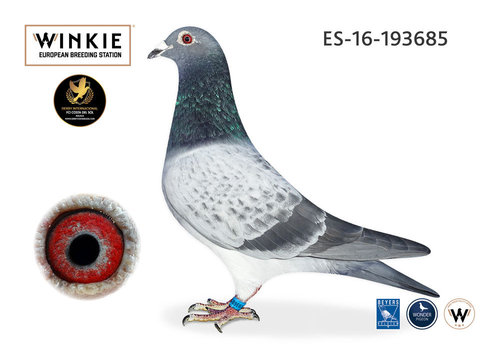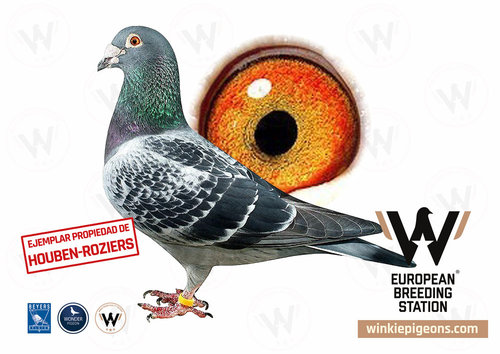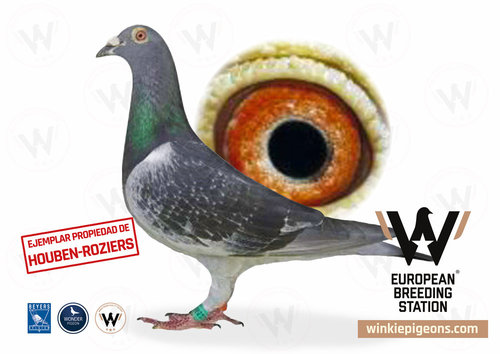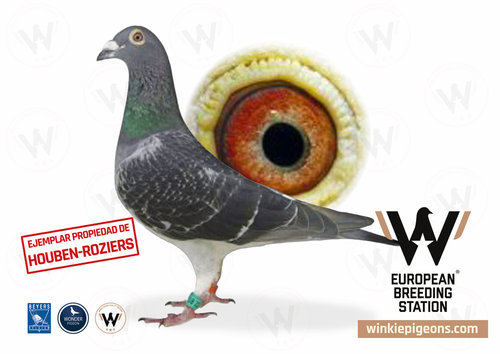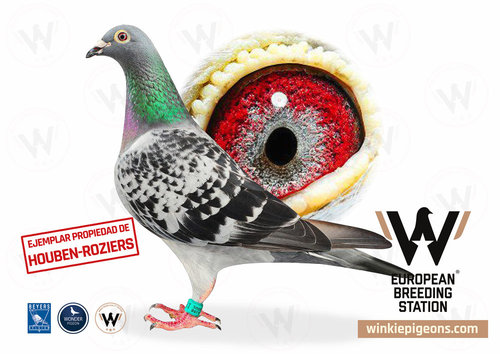Lignées

Houben-Roziers
|
ORIGINE Belgium |
|
DISCIPLINES Fondo, Medio Fondo |
|
Pigeons célèbres |
HISTOIRE
Houben, a lineage from the beginning of the 20th century
The Houben family is one of the lineages with the longest trajectory and history in the world of pigeon racing. Located in the town of Itegem, very close to the Belgian city of Antwerp, Jef, its leader, his wife Eveline, their two children, Luc and Nadia and their spouses, as well as Jef's niece, Cindy, have been responsible over the years for maintaining the name of this spectacular pigeon loft. Before Jef, his grandfather and father were also fanciers. We are therefore talking about one of the oldest lineages in Europe.
The beginnings with Belder
Jef's father, Gerard, had been breeding pigeons since 1920 but, despite his great enthusiasm, he never achieved great success. He was best known for his ability to build excellent breeding lofts rather than for his pigeon flying skills. If this was so, the question arises as to why then the Houbens have been so important in the history of Belgian pigeon racing. The answer is that Gerard married the daughter of a heavyweight in the pigeon world, Belder. Therefore, we have that Jef's grandfather, on his mother's side was Mod de Belder, who owned the largest pigeon based pigeon colony of Fonne Ceulemans de Berlaar. For pigeon fanciers, it should be noted that the famous line of pigeons of the Janssen brothers from Arendonk, were awarded by this same Fonne Ceulemans. It is here that we see the importance of the Houben family and the connection with Belder, owner of the pigeons of Fonne Ceulemans origin.
From the time Jef was a child, he showed real skills in poultry breeding. He spent hours and hours with his grandfather, from whom he learned every last detail of this incredible world. Gradually he took on more and more responsibility in his father's breeding loft and in his last days of life he was proud to have kept his breeding pair, Jonge Artist and Sissi, which dated back to the Ceulemans pigeons, with more than 50 years of history, inherited from his grandfather's breeding loft. Also, the introduction of the last pigeons of his friends Stan Raeymakers, Frans Stoces, Albert Everaerts and some changes he made with Karel Hufkens, Jos van Loo, Jos Thoné and Gommar Verbruggen, contributed to the creation of the great Houben lineage. Not all the pigeons introduced gave great competitors, therefore each newly introduced bird was tested with great care before it became part of the Houben breeding line.
Luc and Nadia Houben
In the 1950s, Jef Houben's two children, Luc and Nadia, began to take an interest in the loft that had seen them grow up. Just as his grandfather had done with him, Jef also instilled in his two children a love for the sport and a constant dedication to the pigeons in order to obtain good results. Such was the passion and motivation for this world that, at the beginning, Jef only competed in speed flying and, over the years, with dedication and hard work, the Houben family's activity has focused on medium and long distance flying.
Jef was a man true to his principles and passionate about the sport. Just before his death, he was still an active member of the first club he joined, De Witpen Itegem, organiser of the Quievrain and Noyon races. Jef had already won twelve first places in 1951, and in 1958 he became the champion of his Itegem club. During the 1960s, he began to focus on middle-distance flying, resulting in 1966 in second place in the AS Paloma provincial middle-distance race in the province of Antwerp, among many other championships won. In the 1970s, Houben went from being the king of speed flying to being the champion of long-distance flying. The year 1975 was one of the most successful years of his career, winning 16 first positions in different races. During this period, his bird, Young Baron was 1st provincial and 8th national AS Pigeon in the cross-country category. At the same time, he also placed 1st national AS Pigeon in the junior category, a title awarded by the prestigious magazine De Belgische Duivensport.
The loft
The competitive superiority of the Houben family became so obvious and uncomfortable that even the most powerful fanciers in the province of Antwerp, fearing to lose their birds, excluded the Houben family from some of the medium and long distance flights. What many might interpret as flattery, for Houben was a real disappointment as he found himself with a loft divided in two, the racing pigeons and the breeding pigeons, and without the possibility to compete at provincial level. The number of pigeons in this breeding loft, during the summer months, was about 350, structured as follows: about 50 pairs of breeders, about 50 widowed males and their females, and about 150 young pigeons. Some of the best fledglings were mated in inbreeding, but before that, the method used was the cross-mating of the lines of all good competitors.
Competitions and the working system
The Houben's favourite races were those ranging from 350 to 800 kilometres. The adult pigeons were flown on the widowhood system, which consisted of the following: all the pigeons were mated in November or December, and then the males were separated after the weaning of the first batch of young pigeons and, in April, mated again; only the males took part in the races. The second and third batches of chicks were flown using the dark system. Most of the chicks flew as celibates while the other two categories flew as normal.
The widowers, for example, were trained for one hour in the morning and one hour in the afternoon, allowing them to fly at will around the loft. At the beginning of the season they were put into baskets and trained by gradually increasing distances. The first race took place in mid-April and the first national race in Bourges (480 kilometres) at the end of May. Before this major competition, the birds were trained twice in flights of 110 kilometres, 220 kilometres and 350 kilometres, weather permitting. The young pigeons were also trained twice a day for one hour and then basketed and trained at distances of 1 x 5, 1 x 10, 2 x 20, 2 x 40 and 2 x 60 kilometres. The Houbens trained both in their own loft and at the official clubs.
At the beginning of the season, the adult pigeons were divided into two groups: some raced over distances between 320 and 480 kilometres, others between 480 and 800 kilometres. With the yearlings, a very similar system was used: one group raced over distances between 320 and 480 kilometres, while the others raced over distances between 480 and 640 kilometres. The young pigeons were separated into two groups, males and females, and raced over distances of up to 480 kilometres. Only some of the yearlings were raced up to 640 kilometres. In conclusion, we could say that the Houben lineage has gone down in the history of pigeon racing as one of the lofts that has won the most prizes and, in part, it has been thanks to its most prized pigeon, the Jonge Artist. In almost all the Houben winners and AS of the last few years, you can find his blood in almost all of them. It is arguably this bird that made Houben the icon he is today.
Roziers, the Houben heritage
The Roziers family has a family tree that is closely linked to the world of pigeons. And not only on the side of his grandfather August, who was a great pigeon fancier. Jef Houben's wife Eveline was a cousin of Jelle Roziers' grandmother. At the age of twelve, he became interested in pigeons with Houben as his undisputed teacher and his own grandfather, August. He spent hours and days in the Houben's loft, helping them with the cleaning and whatever else they let him do. In Jelle's words: "We had a very good relationship and it was an honour to be able to spend time in such an important place.
Both his grandfather and Jef flew pigeons and spent many hours dedicated to racing birds. His connection to the Houben family does not end there, but he even had the opportunity to broaden his knowledge of pigeon racing with Hubert Schroyens, Jef Houben's brother-in-law, where he was looking after the loft in 2004. In the same year, an event took place that would mark Jelle's history. He won the 1st National La Suterraine, with Queen L., his pigeon of reference. It was then that Jef Houben called Jelle and asked him if he could bring Queen L. to his loft. Roziers was surprised that Houben wanted to see this pigeon and never imagined what would happen next.
When Jelle arrived at the loft, Jef told him: "Go up and get that male". He was referring to Pinocchio, grandson of Jonge Artist. They took him out of the locker and put him next to Queen L. They sat on the floor and put the two birds in the nest together and it was then that Jelle asked Houben: "What now Jef?" And he replied: "Now, Jelle, you are going to be a fancier". From the four pigeons that Jelle got from that union, between Queen L. and Pinocchio, are descended birds that are among the top 10 national pigeons in Belgium. The young bird competitions in his country usually involve between 15,000 and 30,000 birds, a very high number, and to be in the top 10 means that his pigeons must be doing well.
Over the years, Roziers has used birds from the Houben lineage for breeding and in the end it was like, Jef, please, "can I cross your male this one or that one... and that's how I built up my breeding cadre," Jelle explains. It was "easy and simple", he didn't have to spend large amounts of money to build up his breeding stock and he could use Houben's pigeons with ease. When Jef passed away, his son, Luc was the only one in the family still in the loft but, in 2012, he gave up the sport and racing. He was breeding two rounds and those pigeons went to the loft in Roziers. He flew those youngsters in 2012, 2013 and 2014. At the beginning of 2015, Luc decided to sell all his birds to China and Jelle was lucky enough to keep the last batch of pigeons from his breeding stock.
Young pigeon specialist
In the early 2000s Jelle was considered the 'success trainer' of the moment. The man who, in the last seasons, spread terror, especially in the national races with young pigeons, his speciality. Having a grandfather dedicated to the pigeon racing world, August Roziers, a direct family connection to the breeding specialist Jef Houben and a joint work developed with Hubert Schoyens (brother-in-law of Jef Houben), made him the expert pigeon fancier he is today.
For Jelle Roziers, the most important thing in order to reach the top in national racing was to have good pigeons, the offspring of excellent breeders. Therefore, the foundation was laid with the birds from the old colony of his grandfather, August Roziers, which was supplemented by purchases and breeding with other families such as the Houben, Jos and Jules Engels, Van Hove- Uytterhoeven, Theo Yskout or Van Looy-Somers, among others. In 2004 he won the 1st National Youth La Souterraine with a pigeon descended on the sire's side from his father August Roziers and on the dam's side from Theo Yskout. A specimen that has made history over the years in the Jelle Roziers lineage. This is his pigeon Queen L. She is the number one bird in his loft and the breeder of generations of prestigious prize-winning birds such as Wall Street, Angie, Samana, Fifth Avenue and Texas Girl, among others.
Queen L. has won numerous prizes and from her list of winners we could highlight:
-National La Souterraine 2004 (16.297 pigeons).
-1st National of Bordeaux 2013 (13.049 pigeons)
-2nd National of Bordeaux 2013
-4th National Bordeaux 2006 (11.286 pigeons)
-6th National Gueret 2007 (4.661 pigeons)
His breeding loft abounds in natural pigeons from his area and from his flight line, based on the combination of Queen L. and Pinocchio, Queen L. and Ribaldo, as well as their descendants which, in turn, have produced great racers. Jelle relies on inbreeding between families to try to maintain the lineage but also crosses them with other pigeons from outside, always trying to maintain the lineage of Queen L. with these Houben birds. His offspring have done phenomenally well both in his loft and in other lofts around the world, which explains why his lineage is built around this breeder. In addition, it has given rise to a new bloodline, also with very good results. This is the case of the Oklahoma family.
Oklahoma is a pigeon that has achieved:
-1st AS Long Distance Pigeon in Antwerp 2013
-1st National AS Long Distance Pigeon 2013
-1st Best Young Pigeon Belgium (7 national races at provincial level in 2013)
-3rd Best Young Pigeon in the PIPA Ranking 2013.
Likewise, he does not stop achieving success. For example, what he achieved this year 2017, winning in Bourges II in the young pigeon category. The pigeon was recorded at 13:51:20 after a race of 477.514 km, achieving an average speed of 1359.15 m / min, competing against 38,000 pigeons. It is well known to all pigeon fanciers that Jelle Roziers is characterised by a very tough training regime and therefore only the best pigeons survive. The main characteristic of Roziers is that all those birds that fall are removed from the team, which means that his pigeon lineage consists of nothing but prize winners.
Success of the Roziers-Xiang team
The Roziers-Xiang (his working partner) combination was created only three years ago. Two seasons later, the team has been able to win several As Paloma titles, achieving even better results this year, 2017, than in 2016. What is even more remarkable is that they have achieved a 1st, 2nd, 7th and 11th National As Paloma in just two years, each time with an offspring of the best breeding female they own, Queen L. It is clear that they have found a formula that works for them and that, surely, will allow them to reap great successes in the following season.
2016 has been an incredibly exceptional year for Jelle Roziers, having won no less than eight top 100 national As Paloma championships: 2nd, 7th, 47th, 55th, 66th, 68th, 83rd and 91st National As Paloma Medium Distance (young pigeons). But in 2017, he has achieved 7 classifications in the top 50: 1st, 10th, 11th, 17th, 19th, 35th and 43rd As Paloma Nacional de Medio Fondo (young birds). This translates into a record of 15 top As, including ten top 50 awards. Her super breeder, Queen L, has bred two National As, once again. This is the case of New Queen L, which has been 1st National Ace Pigeon of Medium Distance and the bird Helen, 11th National Ace Pigeon of Medium Distance. Likewise, the male Berre has also obtained an Ace Pigeon title; 10th National Ace Pigeon in Gran Fondo. Berre is not descended from Queen L, but demonstrates the incredible skill and superiority of the Roziers birds.








